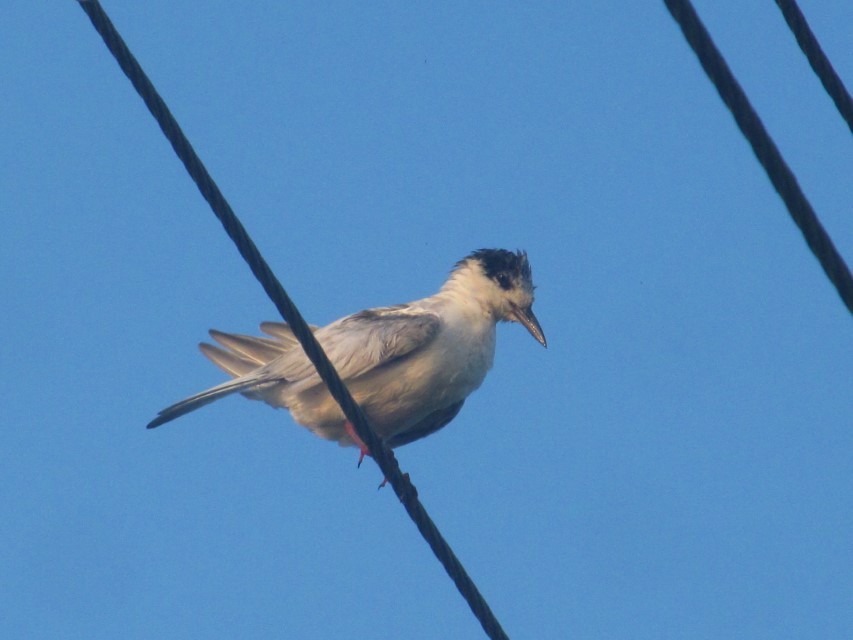Whiskered Tern
A species of Marsh terns Scientific name : Chlidonias hybrida Genus : Marsh terns
Whiskered Tern, A species of Marsh terns
Botanical name: Chlidonias hybrida
Genus: Marsh terns
Content
Description People often ask General Info
 Photo By Vishnubonam , used under CC-BY-SA-4.0 /Cropped and compressed from original
Photo By Vishnubonam , used under CC-BY-SA-4.0 /Cropped and compressed from original Description
The size, black cap, strong bill (29–34 mm in males, 25–27 mm and stubbier in females, with a pronounced gonys) and more positive flight recall common or Arctic tern, but the short, forked-looking tail and dark grey breeding plumage above and below are typically marsh tern characteristics. The summer adult has white cheeks and red legs and bill. The crown is flecked with white in the juvenile, and the hindcrown is more uniformly blackish, though in the winter adult this too is flecked with white. The black ear-coverts are joined to the black of the hindcrown, and the space above is mottled with white, causing the black to appear as a C-shaped band. The sides of the neck are white; this sometimes continues across the nape. The collar is less sharply defined. All through the year the rump is pale grey. In the juvenile, the mantle (279 mm) has a variegated pattern. The feathers of the back and scapulars are dark brown, with prominent broad buff edgings and often subterminal buff bars or centers. There is usually an admixture of new gray feathers, especially on the mantle, quite early in the fall. The mantle is silvery-gray in the adult. The call is a characteristic krekk. In winter, the forehead becomes white and the body plumage a much paler grey. Juvenile whiskered terns have a ginger scaly back, and otherwise look much like winter adults. The first winter plumage is intermediate between juvenile and adult winter, with patchy ginger on the back. The whiskered tern eats small fish, amphibians, insects and crustaceans. 
Size
23 - 28 cm
Colors
Black
Gray
White
Life Expectancy
10 years
Nest Placement
Floating
Feeding Habits
Whiskered Tern primarily preys on insects, insect larvae, amphibians, and small aquatic creatures like fish and shrimp. Known for skimming water surfaces or diving to catch prey, this bird exhibits a flexible foraging behavior, often hunting at dusk or dawn, leveraging dim light conditions.
Habitat
Whiskered Tern thrives in freshwater wetlands, marshes, and vegetated inland lakes, also adapting to saltwater marshes along coastlines. Common in lowland regions and capable of living at altitudes up to 2000 meters, they habitually breed in water-lily-dotted artificial ponds. Whiskered Tern forages in diverse aquatic settings, including rice fields, estuaries, and tidal mudflats, showcasing a remarkable versatility in both breeding and feeding habitats.
Dite type
Insectivorous
People often ask
General Info
Feeding Habits
Bird food type
Species Status
Not globally threatened.